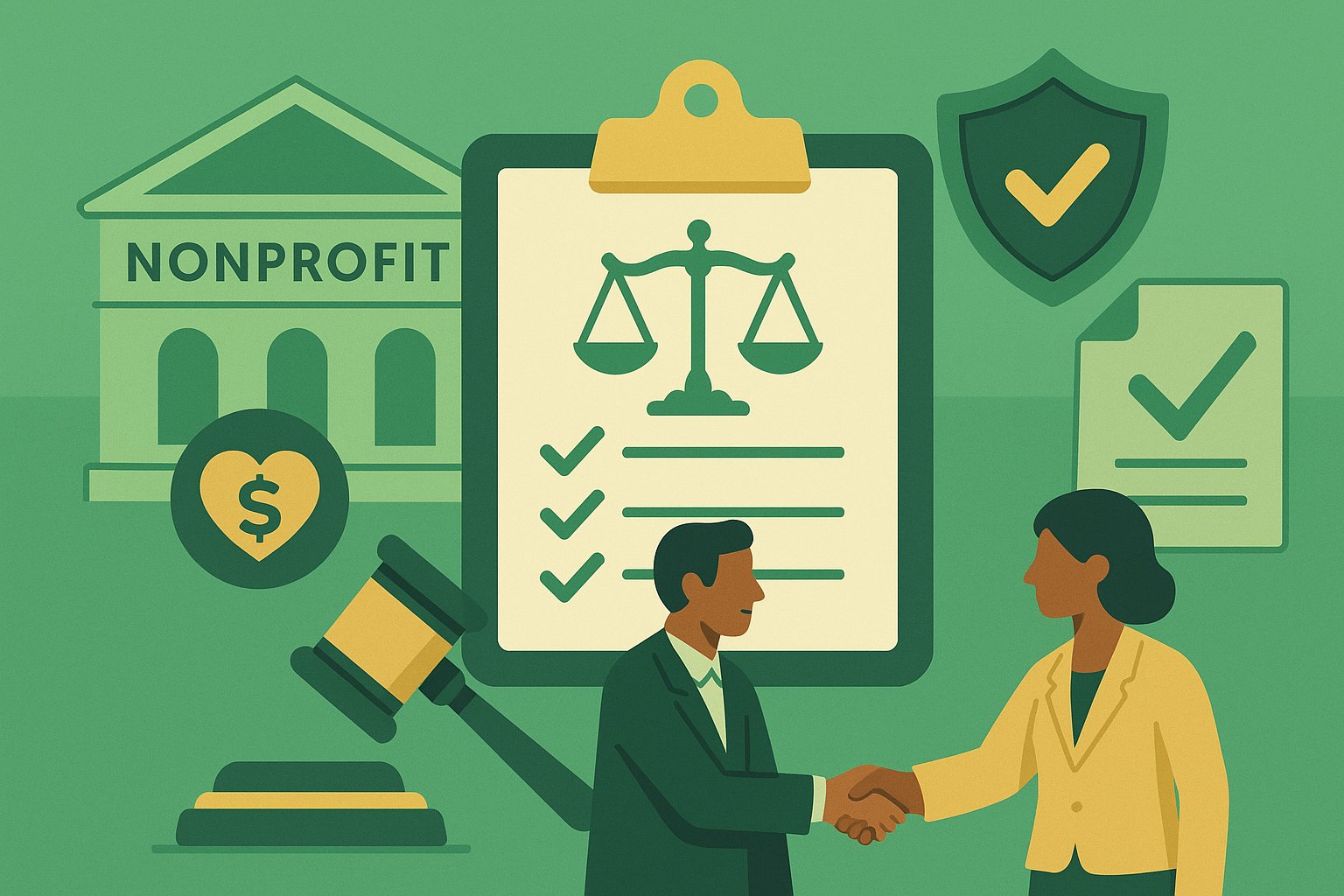Connect, Inspire, Fund: A Roadmap for Community Engagement
Engaging your community is the lifeblood of any successful donation crowdfunding campaign. For nonprofits, fostering genuine connections with supporters goes beyond fundraising; it creates lasting relationships built on trust, shared values, and collective impact. This guide offers practical insights for nonprofit leaders who want to elevate their donation crowdfunding efforts by inspiring their community to give, advocate, and champion their cause.
Building Bridges: Understanding the Heartbeat of Your Community
Before launching a donation crowdfunding initiative, take time to immerse yourself in the unique character of your community. Every town, city, or online network has its own story, challenges, and passions. By conducting informal conversations with local volunteers, board members, and longtime donors, nonprofits can uncover pressing needs, prevailing sentiments, and the issues that truly resonate. This empathetic approach ensures your crowdfunding campaign addresses authentic concerns rather than generic appeals.
Rather than crafting a one-size-fits-all message, tailor your narrative to celebrate shared experiences. Perhaps your community has a history of volunteering in urban gardens, or maybe local families have rallied around youth mentorship in past years. Incorporating these familiar touchpoints into your crowdfunding story demonstrates that you understand—and care about—what matters most. When supporters recognize their own values reflected in your campaign, they are more likely to form an emotional connection, feel seen, and, ultimately, contribute.
Crafting a Story That Resonates Beyond Dollars
Donation crowdfunding thrives on storytelling. A compelling narrative paints a vivid picture of challenges, hopes, and the transformational role supporters can play. Start by introducing a relatable protagonist—perhaps a beneficiary of your nonprofit’s services—whose journey highlights both the obstacles they’ve overcome and the potential for a brighter future. Use concrete details to illustrate the stakes: the number of hours volunteers devote each week, the emotional relief a single scholarship can provide, or the ripple effect of one neighborhood cleanup.
Maintain focus on impact rather than simply stating financial goals. Instead of announcing that you need “$20,000 for operational costs,” frame that sum in human terms: “With $20,000, we can provide weekend literacy workshops for fifty under-resourced children over the next six months.” This shift from abstract figures to real-world outcomes makes it easier for donors to visualize their role as active partners in change. By weaving together individual stories, community anecdotes, and a clear call to action, you’ll cultivate a narrative that motivates supporters to share your vision and invest in tangible results.
Amplifying Your Reach: Harnessing Digital Platforms Wisely
In today’s digital landscape, a thoughtfully designed online presence can make or break a crowdfunding effort. Begin by evaluating which platforms resonate most with your audience. For many nonprofits, a dedicated campaign page on your organization’s website serves as a central hub. This page should feature high-quality images or short videos that illustrate your work, engaging testimonials from beneficiaries or volunteers, and a succinct statement of purpose that doubles as your campaign’s “why.”
Social media channels—Facebook, Instagram, LinkedIn, and Twitter—provide powerful avenues for broadening awareness. However, rather than broadcasting identical posts across every platform, tailor your content to align with each channel’s strengths. On Instagram, leverage visual storytelling through striking photos and succinct captions; on LinkedIn, highlight professional partnerships, grant milestones, or corporate sponsors; on Facebook, invite followers to community events or live Q&A sessions. Make sure each post includes a clear, clickable link directing supporters to your crowdfunding page. Consistent branding—using your nonprofit’s colors, logo, and a recognizable hashtag—helps reinforce credibility and makes it simple for followers to identify and share your message.
Empowering Local Ambassadors and Volunteers
While digital tools are indispensable, grassroots advocacy remains equally vital. Identify passionate volunteers, board members, and longtime donors to serve as community ambassadors. These individuals often have established social networks, local credibility, and firsthand experience with your nonprofit’s mission. Empower them with storytelling toolkits—email templates, shareable graphics, and talking points—so they can champion your campaign at community gatherings, church functions, and neighborhood meetings.
Encourage ambassadors to channel their personal networks by organizing “friend-raising” coffee chats or small-group presentations rather than relying on formal solicitation. When a trusted volunteer shares why they believe in your cause, potential donors perceive the appeal as genuine rather than transactional. Offer guidance on how ambassadors can leverage their own social media profiles—perhaps through a candid video from a recent volunteer event or a heartfelt post about their connection to the cause. Providing these community influencers with clear, tangible steps increases the likelihood they’ll become enthusiastic partners in your crowdfunding journey.
Hosting Impactful Hybrid Events to Strengthen Bonds
Nothing quite matches the energy of an in-person gathering when it comes to building momentum. That said, hybrid events—combining virtual reach with local charm—can significantly expand your audience. Begin by planning a community kickoff event that highlights your nonprofit’s mission and introduces the crowdfunding campaign. Invite local business owners to offer refreshments or raffle items, secure a brief speech from a respected community leader, and incorporate a multimedia presentation showcasing beneficiary success stories. Be sure to provide opportunities for spontaneous testimonials, open floor discussions, and Q&A sessions so attendees feel directly involved and heard.
For supporters unable to attend in person, host a simultaneous livestream or webinar. Virtual participants can watch testimonials, submit questions via chat, and interact with organizers in real time. Encourage donations during the event by setting clear milestones—such as unlocking a matching grant once a certain amount is pledged—or by offering virtual badges or shout-outs for online donors. Following the event, send personalized thank-you emails that recap highlights, share photographs, and include a direct link to your crowdfunding page. This integrated approach ensures that every supporter—whether they attended in person or tuned in from afar—feels equally valued and engaged.
Cultivating Ongoing Engagement with Compelling Content
Once your campaign is live, the work of community engagement begins in earnest. Resist the temptation to publish a single announcement and then fade into silence. Instead, maintain a steady cadence of fresh content that keeps supporters invested. For instance, consider a weekly update that reveals a new “behind-the-scenes” glimpse: a volunteer preparing care packages, a beneficiary sharing their progress, or a partner organization collaborating on a joint initiative. These glimpses humanize your cause, reminding donors that every dollar contributes to real-life transformation.
To heighten excitement, introduce strategic “mini-campaigns” or milestones within your broader effort. For example, celebrate when you hit 25 percent, 50 percent, and 75 percent of your goal by sharing short video messages from the leadership team expressing gratitude and outlining the next steps. Spotlight specific donors or volunteers who exemplify community spirit, using anonymized quotes or brief success stories that illustrate how their support makes a difference. By weaving together multimedia, written narratives, and opportunities for interaction—such as live Q&A sessions or virtual “thank-you” events—you’ll ensure your campaign remains top of mind and encourages ongoing contributions.
Leveraging Partnerships for Mutual Benefit
Nonprofits often overlook the untapped potential of local businesses, faith-based organizations, and civic groups as crowdfunding collaborators. Approach potential partners with a clear value proposition: by associating with your campaign, they gain positive exposure, demonstrate corporate social responsibility, and cultivate goodwill among their clientele. Propose creative sponsorship packages, such as featuring their logo on a campaign “progress banner,” hosting a co-branded fundraiser event, or offering joint social media promotions. Emphasize that these partnerships are not one-sided; your nonprofit can reciprocate by highlighting their involvement in press releases, newsletters, and community bulletins.
Beyond traditional sponsorships, explore opportunities for in-kind contributions that strengthen your crowdfunding appeal. A local restaurant might agree to host a themed dinner where a portion of ticket sales supports your campaign, or a printing company could donate materials for campaign posters and flyers. When partners endorse your cause, their existing networks become new channels for reaching potential donors. Clearly define expectations, outline mutual marketing commitments, and recognize partners publicly throughout your campaign to reinforce the sense of shared purpose.
Nurturing Community Ownership Through Volunteer-Led Initiatives
To deepen community buy-in, invite volunteers to lead complementary initiatives that support your crowdfunding efforts. For instance, a youth committee might organize a neighborhood clean-up whose proceeds benefit the crowdfunding campaign, or a local artist collective could create limited-edition artwork to auction off online. Empowering volunteers to take ownership not only multiplies your reach but also fosters a sense of collective achievement: when people invest time and creativity, they’re more inclined to rally their friends and family around the cause.
Provide volunteers with structured roles and clear timelines to avoid confusion and burnout. Offer regular check-ins—weekly or biweekly conference calls or in-person meetups—where volunteers can share progress, brainstorm challenges, and celebrate wins. When volunteers see their ideas translate into tangible impact—whether through dollars raised or awareness generated—they become passionate advocates who spread the word far beyond your immediate circle. By decentralizing campaign activities, your nonprofit taps into an energized network of grassroots supporters eager to amplify your mission.
Measuring Triumphs and Tweaking Tactics for Continuous Growth
A successful crowdfunding campaign depends on data-driven decisions. From day one, track metrics such as number of visits to your campaign page, average donation size, referral sources (social media, email newsletters, partner websites), and conversion rates from initial engagement to completed donation. Invest in user-friendly analytics tools that can integrate with your website and social media platforms, giving you real-time visibility into which strategies yield the best returns.
Schedule periodic reviews—ideally weekly—to assess progress. If certain outreach methods (like a particular social media platform or local radio spot) generate minimal engagement, consider reallocating resources to higher-performing channels. Conversely, if a specific video testimonial spikes donations, explore ways to replicate its success, perhaps by creating shorter clips for Instagram Stories or TikTok. Being agile and responsive to analytics ensures you’re not simply broadcasting messages into the void; instead, you adapt your approach based on what resonates most with your community.
Sharing Gratitude and Celebrating Collective Impact
Amid the hustle of fundraising, it can be easy to overlook a crucial element: expressing genuine gratitude. A thoughtful “thank you” goes beyond a generic email receipt; it makes donors feel valued and reinforces their decision to support your cause. Consider sending personalized notes that reference a donor’s specific gift or mention their social media share. For larger contributions, offer exclusive updates—perhaps an invitation to attend a special “impact briefing” where you unveil early results of the funded projects.
To celebrate milestones, host a virtual thanksgiving event or a live-streamed “gratitude hour” where board members, volunteers, and beneficiaries share heartfelt messages. Publicly acknowledge partners and ambassadors by featuring them in a dedicated “Supporter Spotlight” section on your website or a pinned social media post. When donors see that their involvement sparks real community appreciation, they’re more likely to remain engaged, contribute again, and serve as enthusiastic ambassadors for future initiatives.
Lighting the Path Forward: Sustaining Momentum Beyond the Campaign
While hitting—or exceeding—your crowdfunding goal is a major victory, community engagement shouldn’t end when the campaign’s timer does. Sustain the energy by sharing regular progress reports on how funds are allocated, milestones achieved, and lives transformed. Invite supporters to participate in volunteer events that showcase funded projects in action, whether that’s a building dedication, a community garden harvest, or a scholarship award ceremony.
Draft a post-campaign communication plan that extends for at least three to six months. This could include monthly newsletters highlighting success stories, behind-the-scenes glimpses into program expansion, or sneak peeks of upcoming initiatives that build on your crowdfunding momentum. By treating donors as partners rather than one-time funders, you foster long-term loyalty and open doors for future collaborations—crowdfunding or otherwise.
Equally important is reflecting on lessons learned. Convene your team and volunteers for a post-mortem discussion: Which outreach channels performed best? Was your storytelling strategy impactful? Did community ambassadors feel adequately supported? Document these insights to refine your playbook for subsequent campaigns. When you continuously iterate and adapt, each donation crowdfunding effort becomes more efficient, effective, and deeply rooted in community trust.




